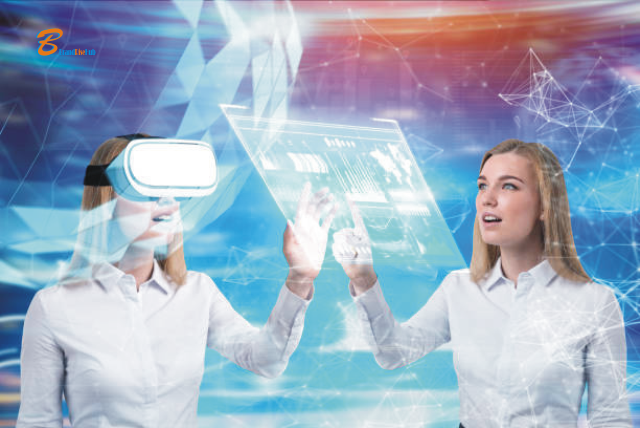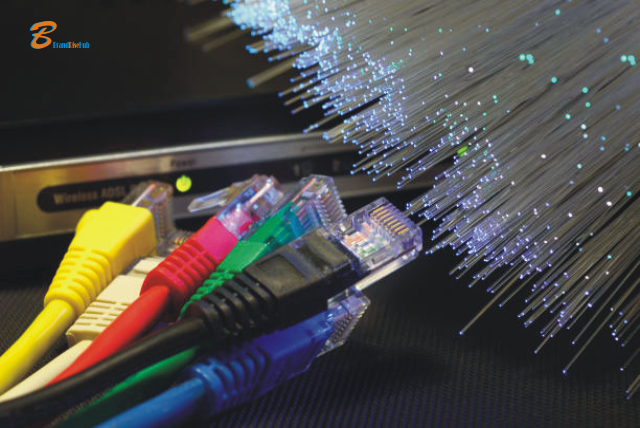AR and VR Trends in Education | Unveiling Top Feature 2025
Contents
- 1
- 1.1 Exploring the Impact of AR and VR on Education
- 1.2 Current Trends in Integrating AR and VR into Learning Environments
- 1.3 Enhancing Classroom Experiences with AR and VR Technologies
- 1.4 Strategies for Implementing AR and VR Trends in Education Settings
- 1.5 Future Directions: Innovations in AR and VR Education
- 1.6 Leveraging AR and VR for Remote Learning
- 1.7 Engaging Students Through Immersive AR and VR Experiences
- 1.8 AR and VR Applications Across Different Subjects
- 1.9 Addressing Challenges and Opportunities in AR and VR Integration
- 1.10 Incorporating AR and VR Trends in Education Programs
- 1.11 Investing in AR and VR Trends in Education Infrastructure for Schools
- 1.12 In future AR and VR Trends in Education
Augmented reality (AR) and Virtual Reality (VR) in education immerse students in interactive experiences. They blend virtual elements with the real world, making learning more engaging and memorable.
Let’s dive into AR and VR Trends in Education. Teachers are integrating these technologies to create immersive learning experiences. Students can explore virtual worlds and interact with content in innovative ways. The result? Education that’s engaging, interactive, and unforgettable.
Exploring the Impact of AR and VR on Education
Let’s delve into how AR and VR are reshaping education. These immersive technologies revolutionize how students learn, making lessons interactive and engaging. Students can explore virtual worlds, dissect biology specimens, or visit historical landmarks from their desks. Educators leverage AR and VR to create dynamic, memorable learning experiences, fostering deeper understanding and retention.
Current Trends in Integrating AR and VR into Learning Environments
Current trends show a rapid integration of AR and VR into learning environments. Educators increasingly utilize these technologies to create immersive learning experiences. Students engage with complex concepts through interactive simulations and virtual field trips. Such integration enhances understanding, making learning more dynamic and engaging.
Enhancing Classroom Experiences with AR and VR Technologies
AR and VR technologies are transforming classroom experiences. They immerse students in dynamic learning environments, making lessons come alive. Teachers can guide interactive lessons, fostering deeper engagement and understanding. Students actively participate, exploring concepts in vivid, memorable ways.
Strategies for Implementing AR and VR Trends in Education Settings
Implementing AR and VR in educational settings requires careful planning and strategic deployment. Start by assessing the learning objectives and identifying where AR and VR can enhance comprehension and engagement. Next, ensure educators receive proper training and support to effectively integrate these technologies into their teaching practices.
Encourage students to explore and experiment with AR and VR experiences, fostering curiosity and active participation in their learning journey. Finally, regularly evaluate the impact of AR and VR implementation to refine strategies and maximize educational outcomes.
Future Directions: Innovations in AR and VR Education
In the realm of education, the future holds exciting possibilities for AR and VR innovations. Educators are exploring new ways to integrate these technologies into classrooms, making learning more immersive and interactive. Students can expect to see a surge in hands-on experiences. They will explore virtual worlds and interact with digital content. As technology continues to evolve, so too will how AR and VR enhance the educational landscape.
Leveraging AR and VR for Remote Learning
Leveraging AR and VR for remote learning revolutionizes the traditional classroom experience. Students immerse themselves in interactive virtual environments, engaging with content like never before. Teachers guide learning through hands-on activities, fostering deeper understanding and retention. With AR and VR, distance becomes irrelevant, connecting learners worldwide in a dynamic educational journey.
Engaging Students Through Immersive AR and VR Experiences
Immersive AR and VR experiences captivate students by transporting them to dynamic virtual worlds. These technologies stimulate curiosity and foster deep engagement, making learning more interactive and memorable. Students actively explore concepts, manipulate objects, and interact with virtual environments, fostering a deeper understanding of complex topics. By integrating AR and VR into education, educators can create rich learning experiences. These multisensory experiences inspire students to actively participate and excel.
AR and VR Applications Across Different Subjects
AR and VR applications are transforming education by offering immersive experiences across various subjects. In science classes, students can explore the human body in 3D, enhancing their understanding of anatomy. In history lessons, they can virtually visit ancient civilizations, bringing historical events to life.
Math concepts become tangible through interactive simulations, making abstract theories more concrete. Language learning becomes dynamic as students engage in virtual conversations, practicing their skills in realistic scenarios.
Addressing Challenges and Opportunities in AR and VR Integration
Addressing challenges and opportunities in AR and VR integration requires careful consideration and proactive planning. Educators must navigate technical hurdles and ensure access to necessary resources. They can seize the chance to revolutionize learning experiences and cater to diverse student needs. By embracing these technologies, schools can unlock a world of immersive educational possibilities.
Incorporating AR and VR Trends in Education Programs
Incorporating AR and VR in special education programs revolutionizes learning experiences for students with diverse needs. These technologies offer immersive environments where students can engage with educational content in interactive ways.
Teachers tailor activities to cater to individual learning styles, fostering inclusivity and engagement. By leveraging AR and VR, special education programs create dynamic and personalized learning journeys for every student.
Investing in AR and VR Trends in Education Infrastructure for Schools
Schools are increasingly investing in AR and VR Trends in Education infrastructure to enhance learning experiences. These technologies empower students with immersive educational tools, fostering curiosity and exploration.
Collaborative Learning in Virtual Environments
1. Immersive Learning Experiences: AR and VR provide immersive environments. Learners can engage with content in a more interactive and hands-on manner. This approach promotes collaboration among peers.
2. Remote Collaboration: Remote learning has become more prevalent. AR and VR offer solutions for students and educators to collaborate from different locations. These technologies foster teamwork and communication skills.
3. Simulations and Role-Playing: Virtual environments allow students to participate in simulations and role-playing scenarios. They can work together to solve problems. Students make decisions and learn from each other’s experiences.
4. Cross-Cultural Collaboration: AR and VR platforms enable students from different cultural backgrounds to collaborate and learn from each other. This promotes diversity and global understanding.
5. Project-Based Learning: Collaborative projects in virtual environments encourage students to work together towards common goals. They promote critical thinking, problem-solving, and leadership skills.
6. Teacher Facilitation: Educators play a crucial role in facilitating collaborative learning experiences in virtual environments. They guide discussions and provide feedback. They also create opportunities for peer interaction.
7. Accessibility and Inclusivity: AR and VR technologies enhance learning accessibility. They support students with diverse learning needs. These technologies offer alternative ways to engage with content. They also facilitate collaboration with others.
8. Data Analytics and Assessment: Virtual environments offer opportunities for educators to collect data on student interactions. This data enhances engagement. It allows for more personalized feedback and assessment of collaborative learning activities.
AR and VR Simulations for Real-World Experiences
1. Field Trips and Virtual Tours: AR and VR technology can simulate real-world locations. These locations include historical landmarks, museums, and scientific sites. This allows students to explore and interact with them virtually. This provides access to experiences that may be otherwise difficult or impossible to access due to logistical or financial constraints.
2. Training Simulations: In fields such as healthcare, aviation, and manufacturing, AR and VR simulations are employed extensively. They train students and professionals in realistic scenarios. For example, medical students can practice surgical procedures in a virtual operating room. Pilots can simulate flight maneuvers. Engineers can troubleshoot machinery in a virtual environment.
3. Soft Skills Development: AR and VR simulations can develop soft skills. These include communication, teamwork, and leadership. For instance, students can join virtual role-playing scenarios. They interact with virtual characters. This helps them practice interpersonal skills in realistic situations.
4. Safety Training: Industries with high-risk environments include construction, firefighting, and emergency response. They use AR and VR simulations to train personnel in safety procedures. These methods also help staff learn emergency protocols. These simulations provide hands-on experience without exposing individuals to actual danger.
5. Environmental Education: AR and VR Trends in Education technology can simulate environmental scenarios. These include climate change effects, natural disasters, and ecological systems. This simulation allows students to explore and understand complex environmental issues firsthand.
6. Cultural Immersion: AR and VR simulations can transport students to different cultures and historical periods. These simulations provide immersive experiences. They enhance cultural understanding and empathy. For example, students can virtually visit ancient civilizations or experience life in different countries.
7. Job Shadowing and Internships: AR and VR simulations can create workplace environments and tasks. They allow students to experience different careers and industries before entering the workforce. This can help students make informed career choices and gain valuable insights into their desired professions.
8. Experiential Learning: Overall, AR and VR simulations provide experiential learning opportunities that engage students in hands-on, immersive experiences. By bridging the gap between theory and practice, these simulations enhance learning outcomes and prepare students for real-world challenges.
Ethical Considerations in AR and VR Trends in Education
1. Privacy and Data Security: AR and VR Trends in Education platforms may collect sensitive data about users. This includes biometric information or behavioral data. It’s essential to prioritize user privacy and implement robust security measures to protect this data from unauthorized access or misuse.
2. Inclusivity and Accessibility: AR and VR experiences should focus on inclusivity. Designers must ensure they are accessible to users of all abilities and backgrounds. This involves providing alternative modes of interaction for users with disabilities. Designers should also address potential biases in content and design.
3. Content Integrity: Developers and educators must ensure that AR and VR content is accurate and reliable. It must also be free from misinformation or bias. This includes verifying the sources of information and providing balanced perspectives on complex issues.
4. Ethical Use of AI and Biometrics: AI algorithms raise concerns about surveillance in AR and VR systems. Biometric tracking technologies also risk manipulation and discrimination. It’s essential to use these technologies ethically, respecting users’ autonomy and consent and mitigating potential risks of bias or discrimination.
5. Digital Citizenship and Online Safety: AR and VR experiences should promote digital citizenship skills. These skills include critical thinking, media literacy, and responsible online behavior. Educators should also educate students about online safety and cybersecurity risks associated with immersive technologies.
6. Cultural Sensitivity and Representation: AR and VR Trends in Education should respect diverse cultural perspectives. They should avoid perpetuating stereotypes or cultural appropriation. We must involve diverse stakeholders in the design and development process. This ensures that content is culturally sensitive and inclusive.
7. Intellectual Property Rights: Developers and educators must respect intellectual property rights. This is important when creating and using AR and VR Trends in Education. This includes obtaining appropriate permissions for copyrighted material and giving credit to creators and contributors.
8. Child Safety and Well-being: Designing AR and VR experiences for children requires prioritizing their safety. Their well-being is equally crucial. This includes providing age-appropriate content, protecting children from harmful or inappropriate content, and implementing parental controls and supervision mechanisms.
In future AR and VR Trends in Education
- Immersive Learning Experiences: AR and VR will provide students with immersive learning experiences. They allow students to interact with educational content in three-dimensional environments. This hands-on approach enhances engagement and retention.
- Personalized Learning: These technologies will enable personalized learning experiences tailored to individual student needs and preferences. Teachers can create customized content and simulations to cater to diverse learning styles.
- Global Collaboration: AR and VR will facilitate global collaboration. They connect students and educators from different parts of the world in virtual classrooms. This fosters cultural exchange and enhances cross-cultural understanding.
- Enhanced Skill Development: Students can develop practical skills in simulated environments without real-world consequences. For example, medical students can practice surgical procedures in VR simulations, enhancing their proficiency and confidence.
- Accessible Education: AR and VR can make education more accessible to students with disabilities or those in remote areas. These technologies can provide alternative means of accessing educational content and resources.
- Gamification of Learning: Gamification elements can be integrated into AR and VR educational experiences. This integration can make learning more engaging. It also makes learning more enjoyable. Rewards, challenges, and interactive storytelling can motivate students to actively participate in their learning journey.
- Professional Development for Educators: AR and VR can also be used for teacher training and professional development. Educators can participate in simulated teaching scenarios to refine their instructional techniques and classroom management skills.
- Data-driven Insights: These technologies can generate valuable data insights into student learning behaviors and preferences. Educators can use analytics to assess student progress, identify areas for improvement, and tailor instruction accordingly.
Conclusion
The evolving landscape of augmented reality (AR) and virtual reality (VR) presents a promising future for education. These technologies are poised to revolutionize traditional teaching methods by offering immersive, personalized, and accessible learning experiences.
AR and VR can foster global collaboration. They enhance skill development and learning. These technologies have the potential to engage students in ways previously unimaginable. Educators and innovators will keep exploring and integrating these technologies into educational practices. We can anticipate a future where AR and VR play a central role in shaping how we teach and learn.










One Comment